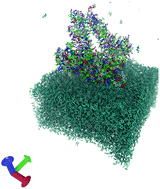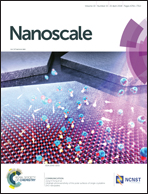Disease-related metabolites affect protein–nanoparticle interactions†
Abstract
Once in biological fluids, the surface of nanoparticles (NPs) is rapidly covered with a layer of biomolecules (i.e., the “protein corona”) whose composition strongly determines their biological identity, regulates interactions with biological entities including cells and the immune system, and consequently directs the biological fate and pharmacokinetics of nanoparticles. We recently introduced the concept of a “personalized protein corona” which refers to the formation of different biological identities of the exact same type of NP after being exposed to extract plasmas from individuals who have various types of diseases. As different diseases have distinct metabolomic profiles and metabolites can interact with proteins, it is legitimate to hypothesize that metabolomic profiles in plasma may have the capacity to, at least partially, drive the formation of a personalized protein corona. To test this hypothesis, we employed a multi-scale approach composed of coarse-grained (CG) and all atom (AA) molecular dynamics (MD) simulations to probe the role of glucose and cholesterol (model metabolites in diabetes and hypercholesterolemia patients) in the interaction of fibrinogen protein and polystyrene NPs. Our results revealed that glucose and cholesterol had the capacity to induce substantial changes in the binding site of fibrinogen to the surface of NPs. More specifically, the simulation results demonstrated that increasing the metabolite amount could change the profiles of fibrinogen adsorption and replacement, what is known as the Vroman effect, on the NP surface. In addition, we also found out that metabolites can substantially determine the immune triggering potency of the fibrinogen–NP complex. Our proof-of-concept outcomes further emphasize the need for the development of patient-specific NPs in a disease type-specific manner for high yielding and safe clinical applications.



 Please wait while we load your content...
Please wait while we load your content...